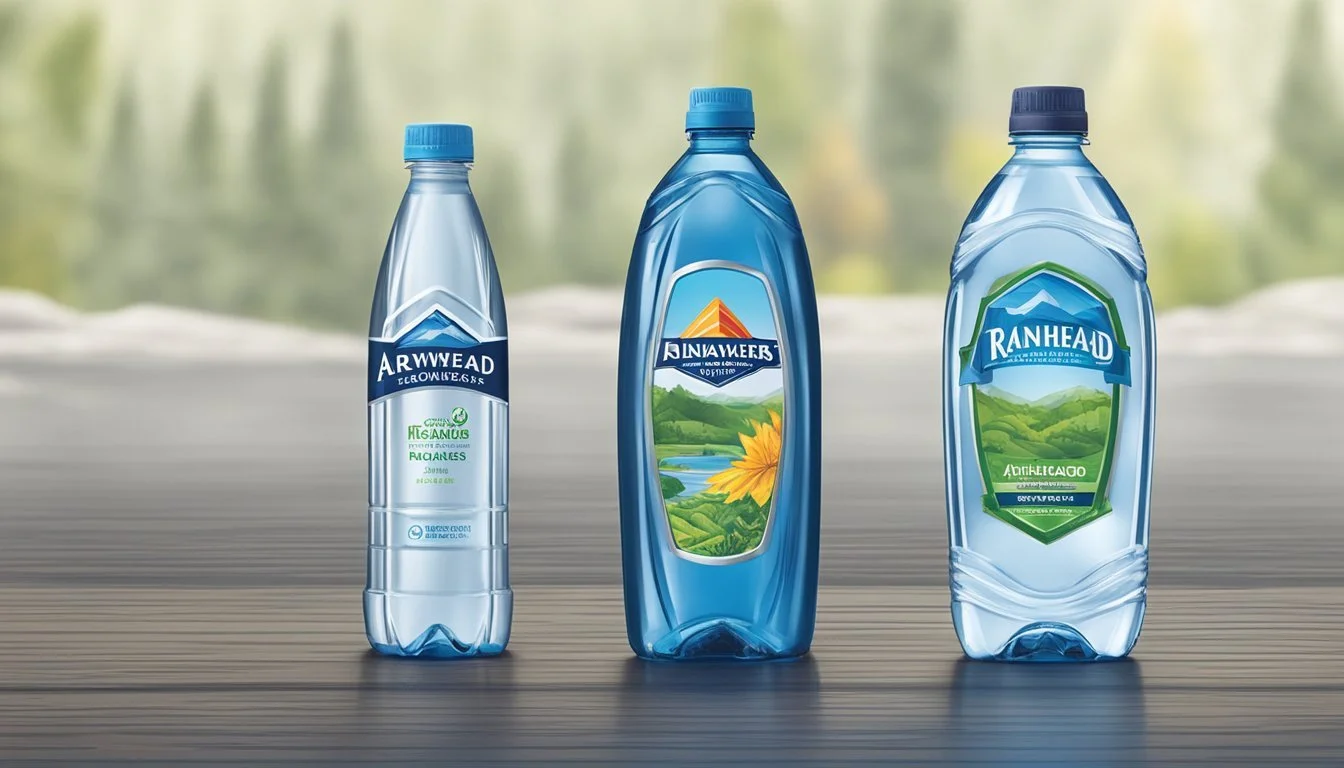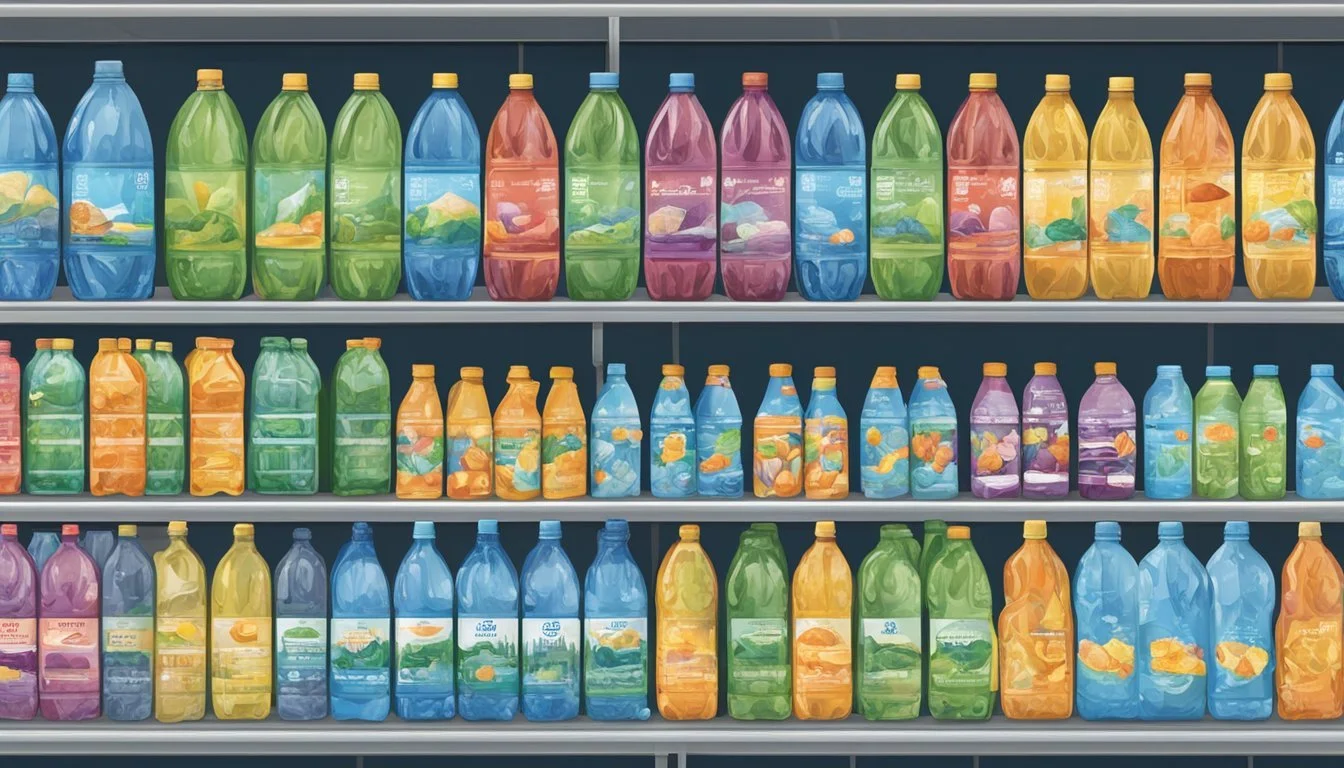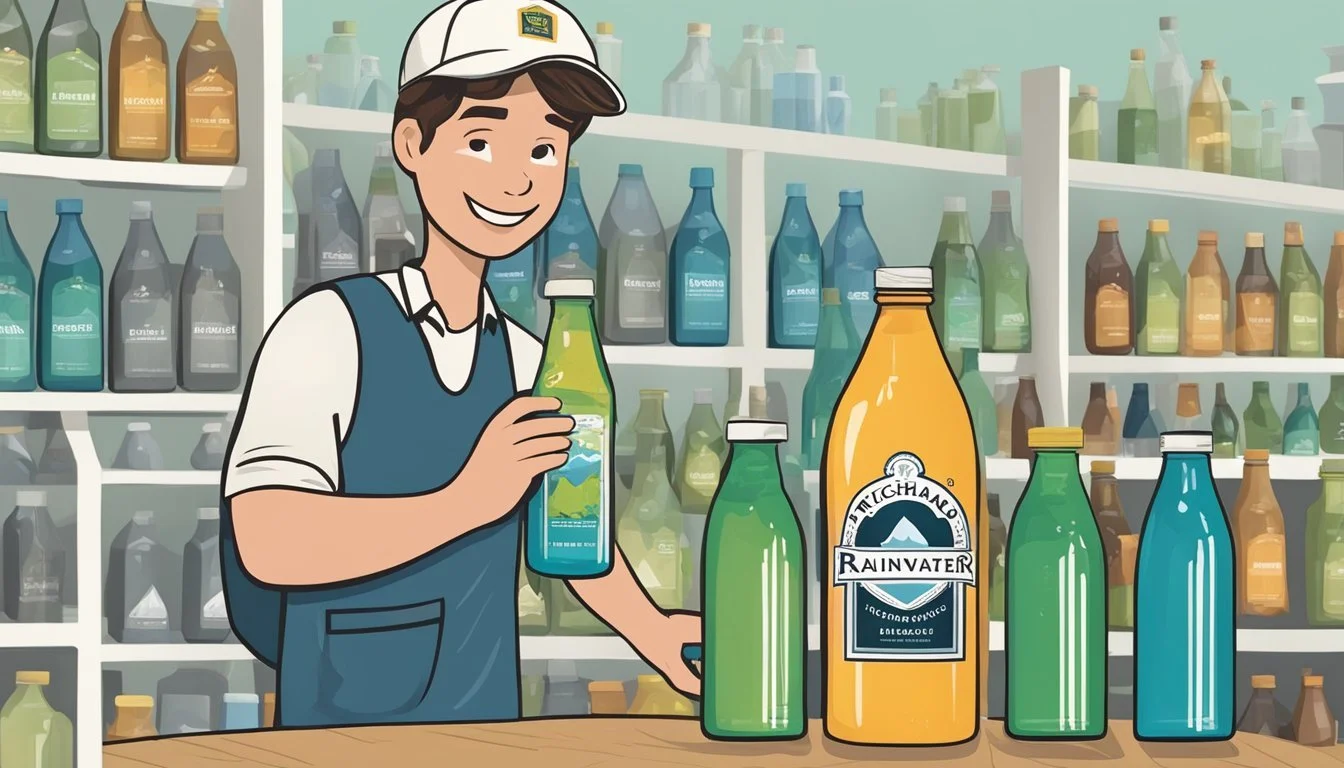Arrowhead vs. Richard’s Rainwater
Comparing Bottled Water Quality
While the world of bottled water may seem straightforward, there are distinct differences between brands that can significantly impact the consumer experience. Arrowhead and Richard’s Rainwater represent two unique options in this flourishing market. Arrowhead, known for sourcing its water from carefully selected mountain springs, provides a reliable and easily accessible option for many.
Richard’s Rainwater, on the other hand, offers a distinctive approach by harvesting rainwater and purifying it for consumption. This method is not only innovative but also underscores a commitment to sustainability. When comparing these two brands, Richard’s Rainwater often stands out for its purity and environmentally friendly practices.
Readers looking to make a more informed choice in their bottled water consumption will find the contrast between Arrowhead’s traditional spring-sourced water and Richard’s Rainwater’s eco-conscious rainwater appealing. The subsequent sections will explore these differences in more detail, helping to determine which bottled water aligns best with individual preferences and values.
Understanding Bottled Water
Bottled water is a highly convenient and portable option for drinking water. It comes in various types and brands, each with its unique qualities and processing methods. The packaging often includes plastic or glass bottles, which help maintain the water's quality from source to consumer.
Quality is a key consideration. Bottled waters often undergo purification processes to remove impurities. Methods such as reverse osmosis, distillation, and carbon filtration can be used. These processes aim to eliminate contaminants, including fluoride, chlorine, and other chemicals that might affect water taste or safety.
Bottled water standards are set by regulatory bodies like the FDA in the United States. These standards ensure that bottled water is safe for consumption and meets specific criteria for purity. These regulations cover everything from source protection to bottling and labeling.
Consumers also consider taste, which is influenced by the water's mineral content and purification process. Some prefer water with higher mineral content, while others aim for purely purified options without any additional minerals.
Packaged water is also scrutinized for its environmental impact. Plastic bottles, although convenient, are a significant source of waste. Brands are increasingly looking at using recycled materials or encouraging recycling to counter this issue.
The presence of additives like fluoride and chlorine is another consideration. Fluoride is often added to promote dental health, whereas chlorine is used to disinfect. However, preferences vary, with some consumers preferring water free from any additives.
Different brands have different strengths. Arrowhead, for instance, is known for its natural taste, whereas Richard's Rainwater prides itself on harvesting and purifying rainwater, offering a unique bottled water experience.
The Brands at a Glance
Arrowhead and Richard's Rainwater offer distinct approaches to bottled water. Arrowhead focuses on natural spring sources, while Richard's Rainwater pioneers the use of collected rainwater. Here’s a closer look at each brand.
Arrowhead: A Historical Overview
Arrowhead has a rich legacy rooted in California springs. Established over a century ago, it sources its water from springs in the San Bernardino Mountains. Known for its distinct taste, Arrowhead's water is naturally filtered through layers of rock and sand, gathering essential minerals along the way.
In the bottled water industry, Arrowhead has maintained a strong presence, emphasizing natural purification methods. They have also undergone a series of brand refreshes to appeal to environmentally conscious consumers, highlighting their commitment to sustainable packaging. Despite some debates regarding the environmental impacts of bottled water, Arrowhead continues to be a preferred choice for many due to its historical significance and strong branding efforts.
Richard’s Rainwater: Pioneering Rain to Table
Richard's Rainwater, based in Austin, Texas, is a pioneer in converting collected rainwater into potable water. This brand stands out for its innovative approach, using a closed-loop system to collect, purify, and bottle rainwater. This process ensures the preservation of natural water cycles and reduces the strain on traditional water sources.
Richard’s Rainwater emphasizes its commitment to sustainability and low environmental impact. Their operations focus on sustainable packaging and minimal use of resources. By turning rainwater directly into drinking water, the brand champions a unique alternative to traditional tap water and spring sources, attracting eco-conscious consumers. Their rain-to-table model sets a new standard in the bottled water industry, marrying innovative practices with environmental responsibility.
Environmental Impact and Sustainability
Both Arrowhead and Richard's Rainwater take unique approaches to bottling water, with distinct implications for environmental impact and sustainability. Differences in their bottling processes and use of renewable resources highlight key considerations for consumers focused on ecological responsibility.
Bottling Process and Its Ecological Footprint
Arrowhead sources water from natural springs, primarily located in California. Its bottling process involves extracting groundwater and packaging it, often resulting in significant plastic waste. Critics highlight the brand's substantial ecological footprint, due to plastic use and the impact of transporting bottles over long distances.
In contrast, Richard's Rainwater utilizes rainwater collection for bottling. This method entails capturing and purifying rainwater close to where the product is distributed, reducing the need for long-distance transportation. Richard's focus on local rainwater helps decrease fossil fuel consumption associated with transport. Additionally, the brand's commitment to bottling in reusable containers, such as glass, further minimizes plastic waste and offers a more sustainable packaging approach.
Renewable Resources and Conservation Practices
Arrowhead emphasizes the use of sustainably sourced groundwater, but the sustainability of its practices is under scrutiny. Activists argue that continuous extraction from natural springs can deplete local aquifers, impacting surrounding ecosystems and wildlife. Arrowhead has faced legal challenges concerning its water extraction methods, prompting debates about the balance between business interests and environmental preservation.
Richard's Rainwater promotes itself as a renewable drinking water source. By collecting rainwater, the brand taps into a naturally replenishing supply. This practice supports water conservation efforts and reduces the strain on traditional water sources. Furthermore, the company has invested in net-positive impact practices, striving not only to be sustainable but to contribute positively to the environment. Their operations set a benchmark for conservation by maximizing the use of renewable resources and minimizing ecological disruption.
Through these practices, both brands highlight important aspects of sustainability in the bottled water industry, with differing levels of impact and effectiveness in promoting environmental stewardship.
Rainwater Harvesting and Purification
Rainwater harvesting involves collecting and storing rainwater that falls from clouds, followed by rigorous purification processes to make it potable. This method relies on efficient collection systems and advanced filtration techniques.
Collecting and Storing Rainwater
Collecting rainwater begins with designing efficient collection sites. Rooftops are commonly used, where rain falls and is directed into storage tanks. For example, Richard’s Rainwater collects rain through vast collection areas, where every inch of rainfall can generate approximately 550 gallons of pure rainwater.
Glass and aluminum containers are often employed to store and preserve the freshness of the water. These materials prevent contamination and maintain the quality of the water until it is ready for use. Storing rainwater properly ensures its availability during dry periods and reduces reliance on municipal water sources.
Filtration and Purification Techniques
Purification of rainwater is critical to meet potable water standards. Richard's Rainwater uses a proprietary zero-waste, chlorine-free filtration system, ensuring the water is free of biological and particulate contaminants. Filtration steps include microfiltration, carbon filtration, and UV light treatment.
These methods effectively purify the water collected, making it suitable for human consumption. The triple-filtering technique ensures that the water remains clear, safe, and superior in quality compared to many traditional water sources. Only after the stringent purification process is the rainwater bottled on-site for distribution.
Product Offerings and Varieties
When comparing Arrowhead and Richard’s Rainwater, it's essential to look at the variety of products they offer. This includes the types of water—still and sparkling—and the packaging options available, such as plastic, glass, and cans.
Options and Flavors: Still vs. Sparkling
Arrowhead primarily offers still water, with various mineral content options based on their different natural springs. They do have a selection of sparkling waters, although the flavor options are relatively limited compared to competitors. Their sparkling line is usually plain, without additional flavors.
Richard’s Rainwater, on the other hand, provides both still and sparkling varieties. Their focus is on the purity derived from collected rainwater, ensuring a fresh taste. The sparkling version of Richard’s Rainwater is notable for its crispness and natural carbonation.
Packaging: Plastic Bottles vs. Glass and Cans
Arrowhead predominantly uses plastic bottles, which are convenient and lightweight. They offer their products in various sizes, from personal to family packs. Plastic bottles are widely recyclable, but their environmental impact remains a concern for many consumers.
Richard’s Rainwater opts for more eco-friendly packaging. They use glass bottles and cans for their products, highlighting their commitment to sustainability. Glass bottles maintain the water's purity without leaching any taste, while cans provide a practical and recyclable option.
Using these various packaging options allows each brand to cater to different consumer preferences, balancing convenience and environmental considerations.
Distribution and Market Presence
Richard's Rainwater and Arrowhead have carved out significant market presences, each leveraging unique distribution strategies and partnerships to reach consumers nationwide.
Retail Partnerships and Availability
Richard's Rainwater has successfully expanded its retail partnerships, securing shelf space in popular grocery chains such as Albertsons, Kroger, Sprouts Farmers Market, and Whole Foods Market. This extensive presence highlights the brand's commitment to making rainwater accessible to a broad audience. Additionally, its focus on environmentally conscious retailers aligns well with its sustainability ethos.
Arrowhead, a long-standing player in the bottled water market, is equally prominent, with availability in major stores across the United States, including Walmart and Target. Its extensive distribution network ensures that Arrowhead is a ubiquitous choice for many consumers seeking bottled water options.
Expanding Footprint: Regional to National
Originally rooted in Austin, Texas, Richard's Rainwater has expanded its footprint significantly. Initially limited to regional markets, the brand now boasts a national presence. This expansion is partly due to strategic partnerships with retailers and a growing demand for sustainable water options. Its collection and bottling, notably free from chlorine, have appealed to health-conscious consumers.
Arrowhead, sourced primarily from natural springs in California, has established itself as a national brand over decades. Its wide reach from regional beginnings in the West Coast to nationwide availability showcases its growth. Arrowhead’s established reputation and reliable distribution channels have ensured its place in the competitive bottled water market.
By tapping multiple retail avenues and emphasizing their unique water sources, both brands have solidified their market presence and continue to attract a diverse customer base.
Consumer Experience with the Brand
Arrowhead and Richard’s Rainwater offer distinct experiences that cater to specific consumer tastes and engagement preferences, shaping how they are received in the market.
Taste Profiles and Consumer Preferences
Consumers often have strong opinions about the taste of bottled water. Arrowhead is known for its mineral-rich flavor, which some consumers appreciate for its distinctive taste. Others may find it too robust compared to more purified waters.
On the other hand, Richard’s Rainwater captures rainwater for a cleaner, fresher taste profile. People who prioritize purity often prefer this brand, valuing its unique source and minimal processing. Each brand’s taste profile significantly influences consumer preferences and loyalty, aligning with individuals’ specific tastes and concerns about water purity and quality.
Online Presence and Customer Engagement
Richard’s Rainwater and Arrowhead leverage social media for customer engagement but in distinct ways. Richard’s Rainwater excels on platforms like Instagram and LinkedIn, sharing content about their sustainable practices and commitment to solving the water scarcity crisis.
Meanwhile, Arrowhead maintains a more traditional branding approach, frequently updating their Facebook page and engaging with a broad audience. By addressing consumer concerns about clean water and quality, they foster trust and reinforce their brand’s presence. Each brand’s online strategy reflects its unique values and efforts to connect with consumers effectively.
Comparative Analysis
Arrowhead and Richard’s Rainwater both strive to offer high-quality bottled water, yet their approaches differ significantly. This section will explore their water quality, environmental practices, and pricing structures to help consumers make an informed choice.
Quality and Purity Comparison
Arrowhead sources its water from mountain springs across the western United States and Canada. Their natural spring water is subject to rigorous quality checks but may contain trace minerals that affect taste. Richard’s Rainwater, in contrast, collects and purifies rainwater. This rainwater goes through a multi-step filtration process to ensure its purity and safety.
Consumers often report a clean, fresh taste from Richard’s Rainwater, attributing it to the lack of dissolved minerals. Arrowhead’s water, while also generally well-received, may have a slightly different taste profile due to its mineral content. Both brands ensure their water meets health and safety standards, but their sources and filtration methods create distinctive drinking experiences.
Environmental Practices and Brand Positioning
Environmental practices and brand sustainability are crucial in today's market. Arrowhead has made strides in reducing its carbon footprint, using eco-friendly practices in its bottling processes. However, it faces challenges due to its large-scale production and sourcing methods.
Richard’s Rainwater prides itself on sustainability by capturing rainwater, which requires no groundwater depletion. They emphasize sustainable packaging and aim for a minimal environmental impact. This approach has positioned Richard’s Rainwater as an eco-conscious brand, appealing to environmentally-aware consumers. Both brands are working towards improved sustainability, but Richard’s Rainwater’s unique capture method gives it a notable edge in environmental efforts.
Pricing and Value Proposition
Pricing is an essential factor for bottled water consumers. Arrowhead is typically more cost-effective due to its mass production and widespread distribution. Retail prices for Arrowhead are often lower, making it a popular choice for budget-conscious consumers.
Richard’s Rainwater, with its specialized collection and purification processes, tends to be priced higher. This premium pricing reflects its niche market positioning and commitment to environmental sustainability. Consumers may choose Richard’s Rainwater for its unique approach and perceived value despite the higher cost.
In terms of value, personal preferences and priorities—such as taste, sustainability, or budget—will guide consumer choice between Arrowhead and Richard’s Rainwater.
Conclusions and Recommendations
Consumer choice plays a significant role when comparing Arrowhead and Richard’s Rainwater. Arrowhead, a well-known brand, offers convenience and widespread availability. Richard’s Rainwater, on the other hand, markets itself as a sustainable and eco-friendly option, appealing to environmentally conscious buyers.
Quality is undoubtedly a key factor. Arrowhead is often found in F-tier rankings due to its taste and lack of unique attributes. In contrast, Richard’s Rainwater is bottled rainwater, which claims to be 100% potable and free from contaminants, promising a crisp and clean taste.
From an environmental impact perspective, Richard’s Rainwater sets itself apart. By harvesting rainwater, the brand reduces groundwater depletion and minimizes its ecological footprint. Arrowhead, sourced from natural springs, does not highlight any particular sustainable practices.
When making a decision, consumers should weigh their priorities. If convenience and accessibility are crucial, Arrowhead might be the better option. For those prioritizing sustainability and quality, Richard’s Rainwater provides a compelling choice.
Users looking for a regular, easily accessible bottled water might lean towards Arrowhead, while those focused on supporting environmental sustainability may prefer Richard’s Rainwater. This evaluation supports informed decision-making based on individual values and preferences.








